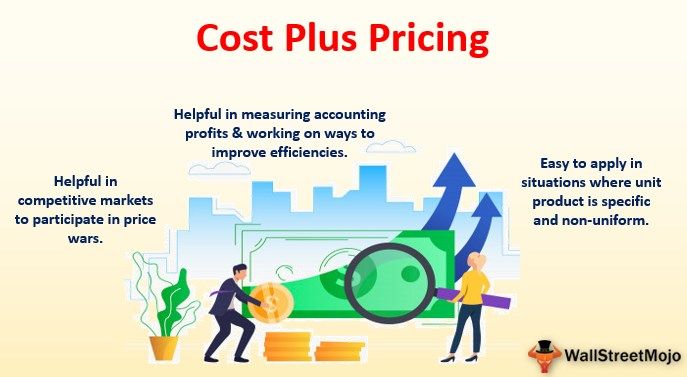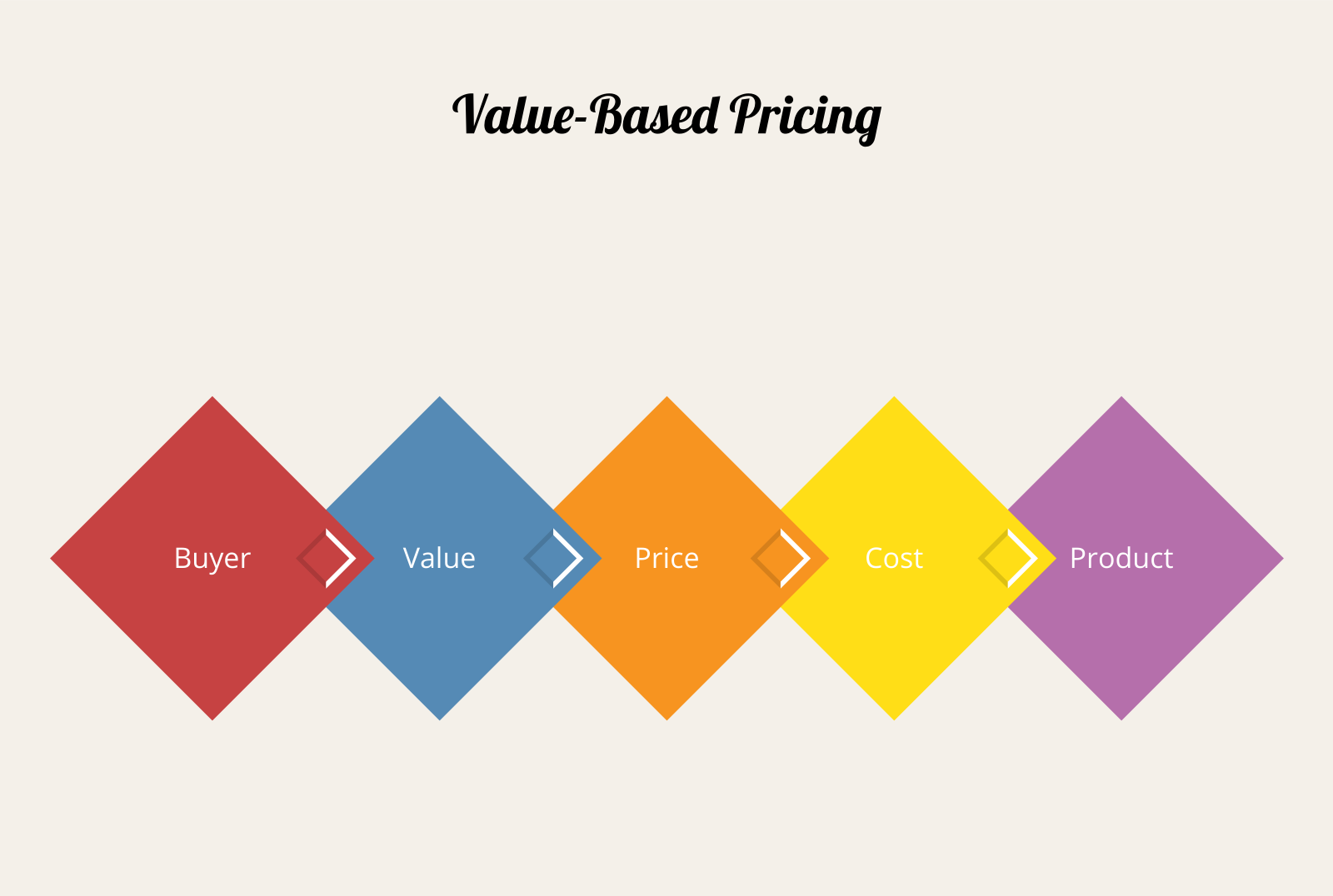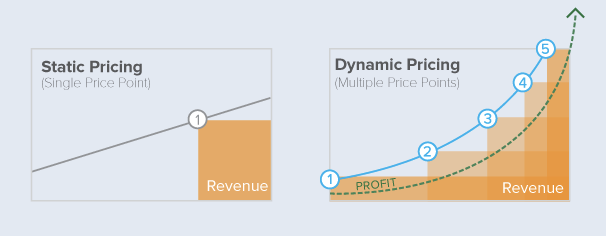We’ve said it before, and we’ll say it again: pulling an idea from your mind and popping your product on the shelf isn’t a doddle - far from it.
Having conducted competitor intel, and successfully built a business case, you’ve got the thumbs up from stakeholders.
But before you can sit back and give your team a whopping high-five, it’s time to address perhaps the most important stage of the whole process: deciding on your pricing strategy.
In this article, we explore:
- What a pricing strategy is
- Calculating price elasticity of demand
- Six types of pricing strategy
- How to choose your pricing strategy
After all, if you set your price point too low, your blood, sweat, and tears, will amount to next to nothing. That said, if your pricing strategy is way out of sync with your target audience, you may as well round up your prospects, pop ‘em in a jumbo jet, and fly them to the HQ of your rivals yourself.
You’ve gotta find the perfect balance.
Thankfully, we’re more than happy to take you under our wing and guide you through pricing perfection.
What is a pricing strategy?
A pricing strategy is the model and/or method an org uses to price their product or service suitably.
There’s no escaping the fact pricing your product or service is tough. Real tough.
After all, your target audience may share the same pain points, but their budgets will inevitably vary.

The process helps companies generate maximum profits, whilst simultaneously taking into account the buyer, as well as trends within the market.
Pricing strategies also differ depending on the nature of your company and circumstances, which makes teaching it somewhat tricky, because there really is no such thing as a one size fits all approach.
Before we check out pricing strategies, let’s put price elasticity of demand under the microscope.
How to calculate price elasticity of demand
As we said, there are many different strategies you can use when pricing your products. But irrespective of which one you choose, there is something you need to take into consideration - price elasticity of demand.
“What on earth is the price elasticity of demand?” we hear you say.
Price elasticity of demand is used to determine how a change in price can have an impact on consumer demand.
There are some products consumers continue to purchase, even if prices increase. For example, milk. If the price of milk increased by 10%, it’s unlikely there’d be a huge change in the demand.
Other products, however, suffer when their price fluctuates. These are known as elastic goods. For example, Coca-Cola. If the price goes up, there are other, cheaper sodas available and the buyer can get their sweet, fizzy fix elsewhere.
It’s time to pop your math hat on, ‘cos we’re throwing a formula for calculating price elasticity your way:
% Change in Quantity ÷ % Change in Price = Price elasticity of demand.
What are the six types of pricing strategies?
Pricing strategies are like the Nightmare on Elm Street franchise: there’s a fair few of them to plow through:
- Competitor-based pricing
- Cost-plus pricing
- Value-based pricing
- Dynamic pricing
- Penetration pricing
- Price skimming
So, we’ve decided to save you valuable time and have included six of our recommended pricing strategies, starting with competitor-based pricing.
Competitor-based pricing
Orgs using a competitor-based pricing strategy get an indication of how much to charge by checking out pricing structures at rival companies who’re offering products or services similar to their own.
When businesses are competing in a highly-saturated market, it’s not unusual for them to opt for this strategy. After all the slightest price difference can sway a customer's decision in their favor.

Let’s say company A has been designing specialist sales enablement tools to save product marketing teams’ time when producing templates and frameworks. If company B enters the market and offers a similar product priced at $39.99 per month, company A can price strategically and set a monthly cost of $34.99. This pricing strategy offers prospects the chance to solve their pain points at a lower price.
As is often the case, there are pros and cons fixed to competitor-based pricing; ‘cos we’re a positive bunch, we’re gonna start with the good news first.
Competitor-based pricing pros:
For starters, it’s a piece of cake to implement. All you have to do is spend half an hour or so searching your competitors’ pricing pages and you’ve got the info you need.
Secondly, to a degree, you’ve got some certainty. After all, if customers are willing to spend $100 for their solution, for example, providing your solution’s on par, why wouldn’t they be willing to fork out the same amount for your product or service?
Competitor-based pricing cons:
Now for the less glam news. You don’t have your pricing strategy. You’re more or less copying someone else’s, in which case, you’re not differentiating yourself, nor are you considering your costs.
When was the last time you saw 007 ride shotgun in his state-of-the-art Aston Martin and give the keys to the villain? Exactly, we never have, and never will see this happen. With competitor-based pricing, you’re putting your destiny in the hands of the enemy.
Plus, there’s a saying in product marketing we’d say goes a long way: when possible, give the people what they want. Just because people are willing to pay a certain price for something, doesn’t necessarily mean they’re over the moon to be doing so. Show them your deck of cards, let them know why you’re different.
You may spring a few pleasant surprises.
Cost-plus pricing
The cost-plus model is essentially adding a percentage for profit to your costs. For example, if the total cost for a pair of trainers adds up to $60 and a company wants to make a 30% profit on each pair, the cost per item would be $78, with $18 profit.
Remember, this model is more widely used among physical products because their material costs can be easily identified; the same can’t necessarily be said for SaaS products. Nonetheless, if you’re a SaaS business trying to follow this model, look at costs like people’s salaries and the number of hours spent building your product. But remember, pricing based on these costs will more than likely rely on a level of assumption.
So, why do orgs lean towards this approach?

Cost-plus pricing pros:
For starters, it’s simple and generates profits - and we all love making money, right? Any product marketer will tell you communicating a price rise is no walk in the park - they’d be right. However, if you apply this model and your costs increase, there’s a direct correlation to your customers’ price increase too.
Cost-plus pricing cons:
As we mentioned with competitor-based pricing, there are two sides to the coin. The key disadvantage of cost-plus pricing is it doesn’t factor your competitors into the equation. By ignoring competitor pricing, there’s a good chance you could end up charging considerably more and achieving small profits, or considerably less and giving away potential profits.
Another problem with this model is it doesn’t encourage the people who are building your product to be prudent. If you’re not careful, people can go in with the attitude of ‘well, we’re going to add 30% onto however much it costs us to make, so it doesn’t matter how much it costs, we’ll profit anyway’. Wrong. If your costs become too high, your retail price will be too high, and people won’t buy it.
It also doesn’t take into consideration the customer and what their perceived value of your product is, and how much they’re willing to spend. The cost-plus model is very company-centric and so even if it’s technically beneficial to your bottom line, it can create obstacles for sales because they aren’t able to justify the price; this can result in lots of discounts which negates the whole point of the model itself.
Finally, although we mentioned price increases might be easier to justify if the price of materials etc. rise, you have no control over how often and by how much by these costs will go up, and there’s only so many times you can up your price in a given period before customers start to get antsy, but if you don’t reflect the difference in your price, it’ll eat into your profits. It also doesn’t account for unknown costs that come as you grow - like marketing, sales, and new hires.
Value-based pricing
The third strategy in our list is value-based pricing, a method whereby you set your price based on how much different customer segments believe your product’s worth. Consequently, the price you charge can vary from customer-to-customer or segment-to-segment.
Before we get stuck into how this one works let’s set the scene a bit, again, using Nike running shoes as an example. Imagine Nike is all set to launch its brand-spanking-new shoe (product A) and Reebok has already launched a shoe of their own, (product B).

Both are lightweight, both are targeted towards endurance runners, and both come in a variety of colors. Nike’s running shoe, however, comes with high-performance insoles built-in. Reebok’s doesn’t. Nike’s shoe targets endurance runners who need extra support underfoot, Reebok’s shoe targets all endurance runners.
With value-based pricing, you need to look at what the next best alternative is and how much people are willing to pay. In this case, that might be buying an ordinary running shoe and the insole separately. Next, you need to understand what about your product is different, so in this example, that’s the built-in, high-performance insole.
The final (and trickiest) step is putting a monetary value on that differentiator. How much are people willing to pay to have the insole built-in to their shoe rather than buying it separately? To get the answer to this, you need to get out there and do some qualitative research.
Let’s pretend you’ve done the research and the result is shoe B costs $50 and separate insoles set people back $10. However, your customer would be willing to pay an extra $15 to have that feature built-in from scratch. 50 + 10 + 15 = $75. That’s your value-based price.
Value-based pricing pros:
So, what are the advantages of this method? It gets to the bottom of what your customers are willing to pay with more accuracy. Sure, you could argue competitor-based pricing does this because customers are willing to pay for their product (they’d be out of business if not!), but value-based pricing puts your potential customers at the heart of that journey as well as differentiating you from your competitors. As always, never underestimate the value of talking to your customers.
Value-based pricing cons:
The biggest downside is the time. As you’ve probably gathered, value-based pricing requires a lot more time and resource than the other two methods we spoke about but you know, as they say, if something’s worth doing, it’s worth doing right.
Dynamic pricing
Otherwise known as demand pricing, surge pricing, or real-time pricing, dynamic pricing is a flexible pricing strategy influenced by market demands, as opposed to a traditional fixed-price structure where prices for goods and services remain the same at all times. The same product or service is sold to different people for different prices.

Factors influencing the price a customer pays can vary depending on numerous factors, including:
- Customer location,
- Time of day,
- Day of the week,
- Level of demand,
- Stock levels, or
- Competitor pricing.
Generally speaking, dynamic pricing is used by fast-paced, B2C businesses, and it’s a price structure that’s logistically more suited to e-commerce because price changes online can be amended quickly and automatically with little-to-no staff input after initial set up.
It’s also worth mentioning dynamically lowering prices can increase demand, while dynamically raising them is typically used when there is a strict constraint on supply.
So, how is dynamic pricing automated? Initially, product marketing needs to identify the market factors that’ll make dynamic pricing acceptable for customers. For example, customers will see value in increased prices for a hotel room in a full hotel or a room with a sauna in it, but not for the model of TV in the room or the quality of the sheets.
These market factors are then used to set an algorithm in place, which is used by software agents who work in the background analyzing this data and adjusting the pricing accordingly. In terms of frequency, these prices can be adjusted as often as required - sometimes even up to once every hour.
Although dynamic pricing can work across many industries, it’s most commonly found in hospitality with things like changing hotel room price structures, early-bird tickets to events, and widely across the transportation industry - such as airline tickets, London’s congestion pricing, toll surcharges during busy periods on San Fran Bay Bridge or Sydney’s Harbour Bridge, or off-peak public transport.
On a day-to-day basis, consumers frequently see dynamic pricing, whether it’s during happy hour at the local pub, buying tickets to a baseball game, Uber’s Surge charge, or from their electricity supplier with peak and off-peak rates.
However, despite being a fixture in modern commerce, the legality surrounding dynamic pricing can be a little grey. It can and has been argued that dynamic pricing has its roots in price discrimination, which is illegal depending on the criteria used. It’s illegal if race, sexuality, gender, or religion are factored in; price discrimination is also a no go if it violates antitrust laws set up to ensure fair competition in an open market.
Dynamic pricing pros:
There are many advantages to a price structure as flexible and fluid as this though and changes don’t always have to go up. Flash sales can help businesses or consultants reach targets, and pricing can be dropped to boost sales in slow periods or for a less-popular product.
Pricing drops can also help put bums on seats in the lead up to entertainment events like sporting events or music concerts, for scheduled flights, or to fill empty hotel rooms, because when it comes to service-based sales, open seats equates to zero revenue.
Being able to raise or decrease pricing depending on product availability is another benefit of the dynamic pricing structure. For example, it’s much easier and cheaper to grow citrus fruits in the summer months, creating savings for growers that can be passed on to customers. This, in turn, allows growers to increase prices in the winter months where growing citrus is more labor-intensive and expensive. Consumers often see this in their local fruit and veg shop or supermarket.
Of course, prices are often increased too. Maximizing profits is a key goal for any business, and dynamic pricing allows businesses to compare their price point with that of the competition and increase it if there’s wiggle room. After all, there’s no point selling a product as cheaply as possible if customers would be willing to pay more for it, while still seeing value for money.
Dynamic pricing cons:
On the flip side of all these benefits, it’s important to remember that everyone hates feeling ripped off, and many customers who notice varying pricing will feel like they’re being taken advantage of, or that they’re less important because they haven’t been given the best price. This can lead to customer alienation, future loss of sales, and lack of customer loyalty.
Consumers don’t always look at the possibilities that dynamic pricing could result in better bargains, but can assume it’s being used to charge them more money than the next person. So the issue to consider first and foremost when adopting dynamic pricing is the perception of fairness that customers will have.
Many shoppers these days are very aware of dynamic pricing, even if not on a conscious level. Savvy shoppers identify themselves as ‘bargain hunters’ and shop around for the best price at the best time. This means many customers may hold off purchasing a product until the best possible moment, skewing product demand statistics.
Although a price war’s the last thing anyone wants, this can be a byproduct of dynamic pricing. Price wars can force prices so low that they become unsustainable, which isn’t good for your product, your competitors, or the customer. Automated adjustments will help ensure this doesn’t occur as pricing models are regulated.
Penetration pricing
When companies are launching a new product, there’s one thing they’re interested in: customers.
Sure, the whiff of hard-hard cash is delightful, but if you don’t have any customers buying your product or service, you’ll find yourself stuck up the proverbial creek with no paddle.
To reduce the risk of this occurring, companies use penetration pricing. They price their product lower than their competitors to prompt an initial surge of sales during the initial release period.
Penetration pricing pulls on the heartstrings of the prospect, with the strategy targeting the customer’s urge to secure the best deal possible. Introducing comparatively low pricing means the customer will earmark the brand as the more affordable option, and you’ll always win a fan or two when there’s money to be saved.
This pricing strategy is in operation more often than you may think. For example, streaming services, such as Spotify and Netflix continue to pit their wits against the big-boys of music and film/TV, while Android and Samsung position their products as the more affordable alternative to Apple.
Penetration pricing pros:
Penetration pricing can work wonders for your brand if the market is right. Given the lower-price of the products on offer, this generates increased customer interest, brand loyalty, and eliminates competition from companies who simply cannot afford to match your offer.
Penetration pricing cons:
On the flip side, when penetration pricing is applied in the wrong market, this can lead to a poor customer experience, generate price wars, or even lead to people forming a poor perception of what your brand represents.
Penetration pricing is often confused with price skimming, when in fact, they’re two different approaches.
Ok, we won’t keep you waiting - here’s a brief insight into price skimming to round off our insight into your pricing options.
Price skimming
While some companies adopt the penetration strategy and price their product at a lower price, advocates of price skimming adopt a different approach, instead opting to charge a high price at launch, before reducing the price as time goes on.
This method is particularly effective when the product or service in question is part of a premium market, or if the target customers ‘don’t have a choice’ but pay the price because it’s not available elsewhere.
Price skimming pros:
Research and development costs when taking a new product or service to market stack up; suffice to say, the costs that can accumulate aren’t a drop in the ocean.
Price skimming is beneficial because it can help orgs recoup the money they’ve spent during the research and development processes.
Take Apple, for example. They reap the benefits from short-term profits that are through the roof when they launch a new gadget. The higher prices can be justified given the trailblazing approach to technological innovation at the given time.
Price skimming can also create an element of prestige surrounding your product or service; it creates the impression your offering is a must-have.
Introducing high prices in the early stages attracts customers who are status conscious, and provides you with a much-needed buffer when it comes to reducing the price in the future, if needs be, when rivals enter the market.
It could be suggested if you were to introduce a low price to begin with, then this would heighten the sensitivity surrounding price amongst your target market, in which case, it’d be difficult to increase rates in the future, without jeopardizing your relationship with your customers.
Price skimming cons:
Ever bought a brand-new shirt from your favorite department store, only to see it in the sale the next day? Pretty frustrating, isn’t it?
Reducing your costs after the initial launch period can trigger the frustration amongst product evangelists who invested their faith (and cash) in your product when it launched; let’s face it, nobody wants to generate bad PR.
Sure, your revamped pricing may increase your demand, but you’ll alienate early adopters in the process.
Add to that, price skimming can also prick the attention of your competitors; while the strategy is introduced to generate custom, it could well have the adverse effect and drive prospects into the arms of your rivals.
Introducing a high-pricing model can yield great success, in which case, this is bound to prompt serious intrigue amongst competitors interested in capitalizing on the market demand.
How to choose your pricing strategy
We’ve outlined a select few of the pricing strategies available, but ultimately, there’s no definitive answer when choosing a solution for your company - it all boils down to one thing.
That’s right: personal circumstance.
Businesses need to utilize a pricing strategy to drive cashflow. To do so, you’ve got to be crystal clear on:
- The cost of producing your product
- The value of your services to your clients
- How much your customers have and want to spend
- The overall running costs of your business
- What critical costs need to be covered short-term (e.g. loan repayments)
- How your competitors price their products
Pricing needs to take every one of these principles into account to drive optimum profit. Who knows? You may even have to go through your business plan with a fine-tooth comb and consider factors such as brand development, team restructuring, etc. before you can draw a definitive conclusion.
Remember, your pricing strategies are by no means definitive. You should continually assess your plan and make changes whenever something isn’t working as you anticipate. Your decision-making process can be dictated by simple metrics such as sales figures and churn rates.
How to improve your Go-to-Market knowledge
Delivered by Yoni Solomon, Chief Marketing Officer at Uptime.com, Go-to-Market Certified includes everything you need to design, launch, and measure an impactful go-to-market strategy.
By the end of the course, you'll be able to confidently:
🚀 Grasp a proven product launch formula that’s equal parts comprehensive, repeatable, creative, and collaborative.
🧠 Gain the expertise and know-how to build and tailor an ideal product blueprint of your own.
🛠 Equip yourself with templates to facilitate a seamless GTM process.




